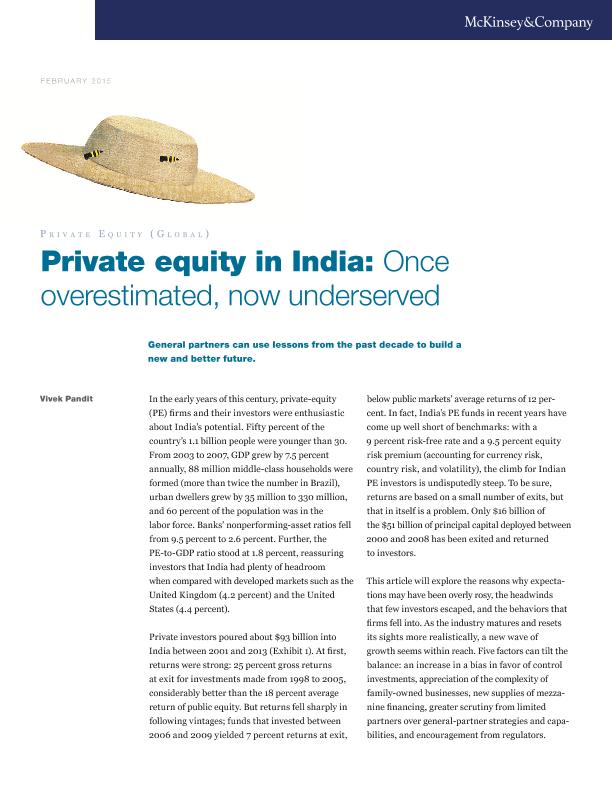Private equity in India : once overestimated, now underserved

Contenido multimedia no disponible por derechos de autor o por acceso restringido. Contacte con la institución para más información.
| Tag | 1 | 2 | Value |
|---|---|---|---|
| LDR | 00000cab a22000004b 4500 | ||
| 001 | MAP20150011336 | ||
| 003 | MAP | ||
| 005 | 20150320122446.0 | ||
| 008 | 150320e20150201usa|||p |0|||b|eng d | ||
| 040 | $aMAP$bspa$dMAP | ||
| 084 | $a921.4 | ||
| 100 | 1 | $0MAPA20150007858$aPandit, Vivek | |
| 245 | 0 | 0 | $aPrivate equity in India$b: once overestimated, now underserved$cVivek Pandit |
| 520 | $aIn the early years of this century, private-equity (PE) firms and their investors were enthusiastic about India's potential. Fifty percent of the country's 1.1 billion people were younger than 30. From 2003 to 2007, GDP grew by 7.5 percent annually, 88 million middle-class households were formed (more than twice the number in Brazil), urban dwellers grew by 35 million to 330 million, and 60 percent of the population was in the labor force. Banks' nonperforming-asset ratios fell from 9.5 percent to 2.6 percent. Further, the PE-to-GDP ratio stood at 1.8 percent, reassuring investors that India had plenty of headroom when compared with developed markets such as the United Kingdom (4.2 percent) and the United States (4.4 percent). Private investors poured about $93 billion into India between 2001 and 2013. At first, returns were strong: 25 percent gross returns at exit for investments made from 1998 to 2005, considerably better than the 18 percent average return of public equity | ||
| 650 | 4 | $0MAPA20080597269$aInversiones privadas | |
| 650 | 4 | $0MAPA20080595906$aDesarrollo económico | |
| 650 | 4 | $0MAPA20080591922$aMercados emergentes | |
| 650 | 4 | $0MAPA20080611897$aPerspectivas económicas | |
| 651 | 1 | $0MAPA20080663636$aIndia | |
| 710 | 2 | $0MAPA20080442569$aMcKinsey & Company | |
| 773 | 0 | $tThe McKinsey Quartely$gFebruary 2015 ; [10] p. |

